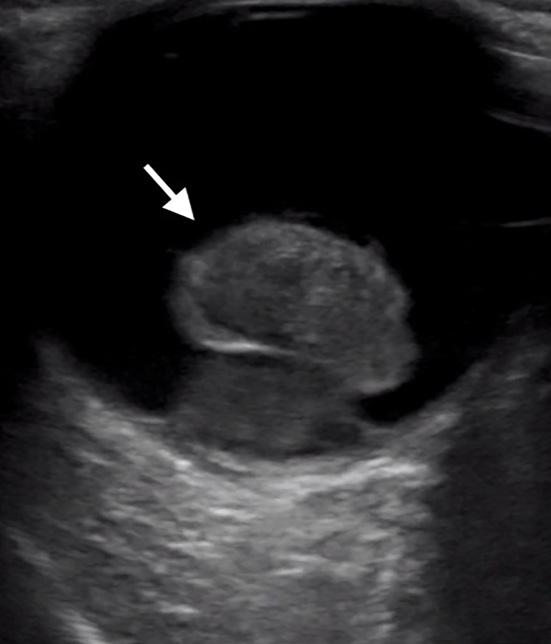Images in Emergency Medicine
Serotonin Syndrome Triggered by Increasing the Dose of Quetiapine Yayoi Miyamatsu, MD* Ryutaro Tanizaki MD, PhD*†
*Nabari City Hospital, Department of Internal Medicine, Nabari, Japan †Mie University School of Medicine, Department of Community Medicine, Nabari, Japan
Section Editor: Rick McPheeters, DO Submission history: Submitted March 18, 2021; Revision received May 12, 2021; Accepted May 10, 2021 Electronically published August 5, 2021 Full text available through open access at http://escholarship.org/uc/uciem_cpcem DOI: 10.5811/cpcem.2021.5.52505
Case presentation: An 85-year-old woman with a history of depression treated with polypharmacy including selective serotonin reuptake inhibitor presented to the emergency department with head, and upper and lower limb tremors four hours after increasing the dose of quetiapine from 12.5 milligrams (mg) per day to 25 mg/day. She was diagnosed with serotonin syndrome (SS), and all medications except clotiazepam were discontinued. The symptoms subsided within 48 hours. Discussion: The use of atypical antipsychotics alone seldom increases the risk of SS. However, combining atypical antipsychotics with serotonergic agents increases the risk of SS because the activity of serotonin receptor subtype 1A is relatively enhanced. This report suggests that physicians should be aware that even a small increase in quetiapine could pose a risk of developing SS. [Clin Pract Cases Emerg Med. 2021;5(3):365–366.] Keywords: serotonin syndrome; quetiapine; tremor; neuroleptic malignant syndrome.
CASE PRESENTATION An 85-year-old woman presented to the emergency department with acute head and upper and lower limb tremors and agitation. She had a long history of major depressive disorder and insomnia, which were treated with escitalopram 20 milligrams (mg) per day, mirtazapine 30 mg/day, sulpiride 20 mg/day, olanzapine 2.5 mg/day, quetiapine 12.5 mg/day, and clotiazepam 5 mg/day. Her symptoms occurred four hours after the dose of quetiapine was increased from 12.5 to 25 mg/ day by her psychiatrist to improve her insomnia. All doses had remained unchanged except for that of quetiapine. Physical examination revealed fever of 39.1℃, tachycardia, agitation, mydriasis, deep tendon hyperreflexia, and symmetrical tremor of the head, and upper and lower limbs that lasted for 15 seconds and repeated at five-second intervals (video). There was no muscular rigidity. Laboratory findings showed normal white blood cells, C-reactive protein, and creatinine phosphokinase levels. A computed tomography of the head was performed and did not reveal any significant abnormalities. Serotonin syndrome (SS) was then diagnosed
Volume V, no. 3: August 2021
based on the Hunter Seratonin Toxicity Criteria,1 and she was admitted to our hospital. All medications except clotiazepam were discontinued, and the symptoms subsided within 48 hours. DISCUSSION Serotonin syndrome is related to overstimulation of a serotonin receptor subtype 1A (5-HT1A), commonly caused by the use of serotonergic agents.1 Quetiapine is an atypical antipsychotic agent that exhibits serotonergic receptor 5-HT2A antagonism, which has a short half-life and is often used to manage agitation and psychotic symptoms in hyperactive delirium.2 The use of atypical antipsychotics alone seldom increases the risk of SS; specifically, there is a lower risk of SS on treatment with quetiapine because it is a significantly weaker 5-HT2A antagonist than other atypical antipsychotics.3 However, combining atypical antipsychotics and serotonergic agents increases the risk of SS because the activity of 5-HT1A is relatively enhanced. Furthermore, because quetiapine also exhibits a dopaminergic D2 receptor antagonism, which may cause
365
Clinical Practice and Cases in Emergency Medicine



















